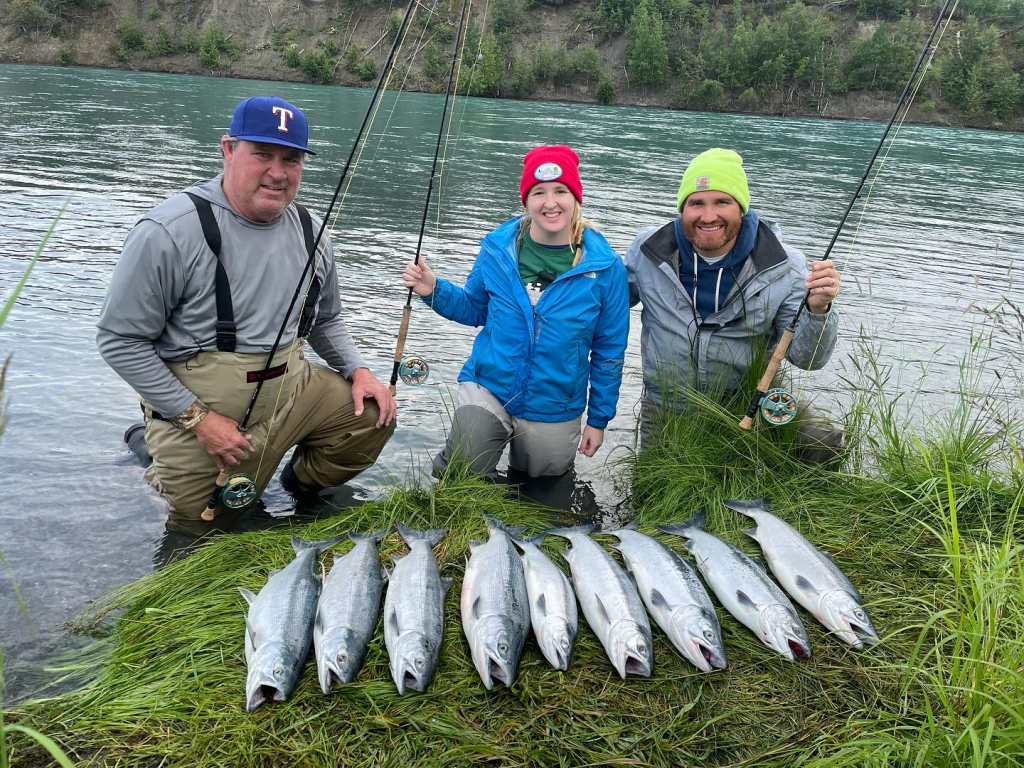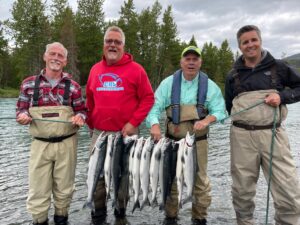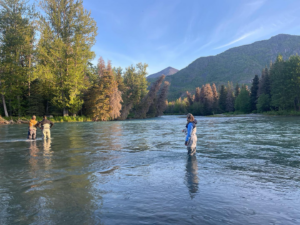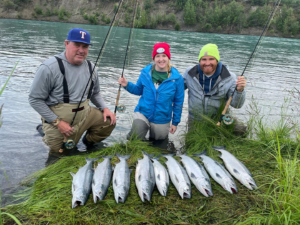As you step into the cool, flowing waters of the Kenai River, you’re not just another angler; you’re about to become part of its legend.
Forget about those generic fishing tips you’ve read online. To truly master the Kenai and fish like the seasoned locals who know its moods and secrets, you need to dive deeper. We’re talking silver salmon that leap with wild abandon and the determined journey of sockeye salmon.
This guide is your insider pass to fishing the Kenai with the prowess of an old hand. Let’s unveil the secrets.
1. Understanding the River’s Seasons
The Kenai doesn’t wear the same face year-round; it shifts and evolves.
Silvers, or coho salmon, make their grand entrance in late July. These fighters bring the thrill, leaping and darting, providing heart-pounding action through late September.
Sockeye, the most sought-after for their sheer numbers and delicious returns, start their journey in mid-June with a second run in late July.
Knowing these patterns is essential. It tells you when to pack your gear, when to hit the road, and when to stand in the flowing waters awaiting the tug that sets the adrenaline pumping.
This harmony between angler and nature is what separates the locals from the visitors.
2. Gear That Gets Results

The right fishing gear is your lifeline. We’re not talking about off-the-shelf setups here. To truly tackle the Kenai, especially when aiming for silver and sockeye salmon, you need gear that’s as tough and reliable as the Alaskan wilderness itself. This is the most important fishing tip of all.
Start with a medium-action rod that offers the perfect balance between sensitivity and strength. Pair it with a reel that boasts a smooth drag system. And the line? Go for abrasion-resistant options that can withstand the Kenai’s challenges, from sharp rocks to the sheer power of the fish.
But let’s not forget what’s at the end of your line. Flies, beads, and nymphs are your main actors in this play. Choosing the right ones is like choosing the right words for a speech; it has to be perfect.
For sockeyes, you must learn to match the hatch with precise bead patterns that mimic the salmon roe they’re feeding on. Silvers respond well to a variety of flies, from streamers that imitate baitfish to flashy attractors that catch their eye.
3. Flies, Beads, and Nymphs: The Local Arsenal
To fish like a local, you need to dive into the arsenal that has been honed and perfected by those who know these waters best.
Flies for the Kenai are selected with precision. They’re not just lures; they’re keys to unlocking the river’s bounty.
For targeting silver salmon, the coho killers, streamers and leech patterns in vibrant colors like pink, purple, and chartreuse can make all the difference. These flies mimic the natural prey of silvers, enticing them with movement and color that’s hard to resist. The egg-sucking leech, in particular, is a staple, combining the allure of a natural leech pattern with the added attraction of a bright, egg-like head.
When it comes to sockeye, the precision of bead fishing comes into play. Matching the size and color of the salmon roe drifting in the river can be the ticket to success. Sockeyes, focused on the eggs laid by previous spawners, are more likely to strike at beads that closely resemble these eggs, making bead choice a critical component of local fishing tactics.
4. Reading the Water Like a Pro
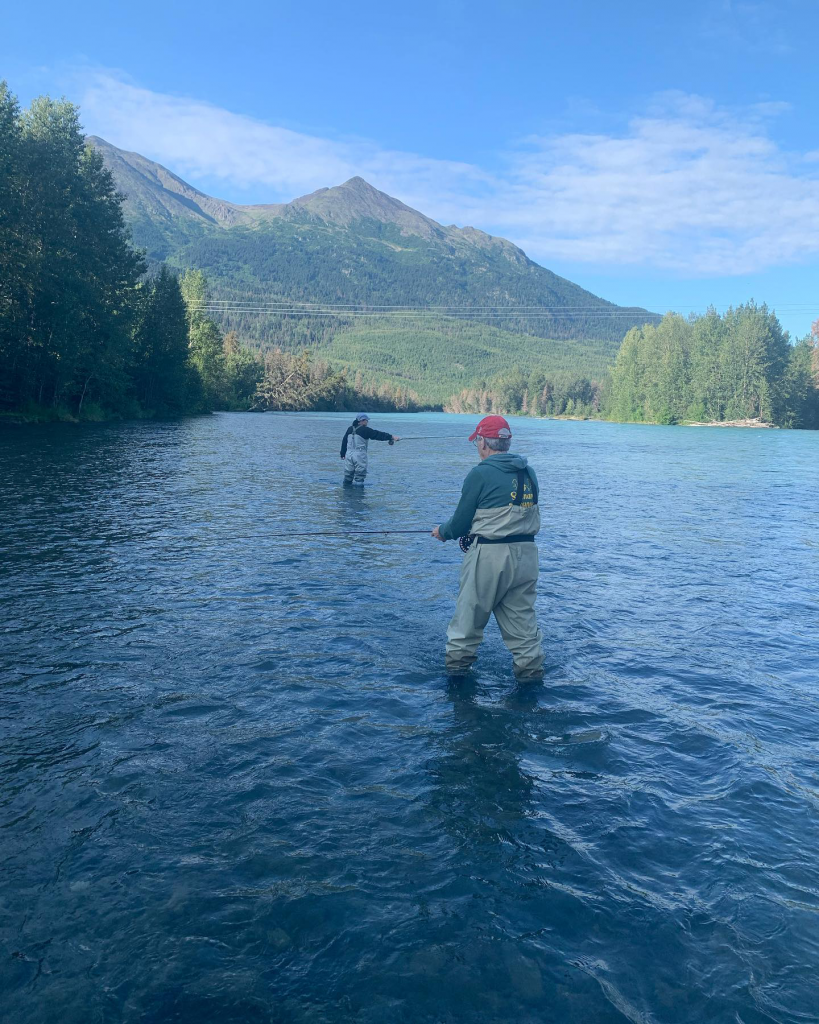
Locals know that silver salmon favor the slower-moving waters, resting in these calmer areas as they make their upstream journey. Identifying these spots, where the current breaks around a logjam or bends in the river, can position you right where the silvers are most likely to strike.
Sockeye salmon, on the other hand, run along the riverbanks, using the reduced current to save energy. Anglers in the know, therefore, cast their lines parallel to the shore, drifting beads or flies into the paths of these river huggers. It’s a nuanced technique requiring an understanding of how water speed and depth change near the banks.
5. The Art of the Drift
Mastering the art of the drift on the Kenai River is akin to learning the language of the waters; it’s about presenting your flies, beads, or nymphs in the most natural manner possible, mimicking the seamless journey of real prey through the currents.
This skill is paramount, especially when targeting the discerning eyes of sockeye and the aggressive strikes of silvers. The perfect drift starts with understanding the river’s flow patterns, identifying seams where fast and slow waters meet, often the dining tables for salmon.
To execute a flawless drift, your positioning upstream and cast placement are essential. Cast your line slightly upstream, allowing your fly or bead to sink near the bottom, and then let it drift downstream with the current, covering the zones where fish are likely to hold or feed. The magic happens in maintaining a tension that’s just right: enough to feel the slightest nibble but loose enough to let the current do the work, giving your fly or bead a lifelike swim.
Adjusting your line length and weight for depth and current speed is also part of this art. Sometimes, a split shot a few inches above your hook is all it takes to turn a good drift into a perfect one. Remember, the goal is to keep your setup in the strike zone as long as possible, enticing those trophy catches with an irresistible, naturally flowing morsel.
Partner with Jason’s Guide ServiceTop of Form
Are you ready to embark on an exciting Kenai River guided fishing trip? At Jason’s Guide Service, we’re excited to take the reins! We plan a range of guided fly fishing trips, including salmon fishing, rainbow trout fishing, and more. Book now!

